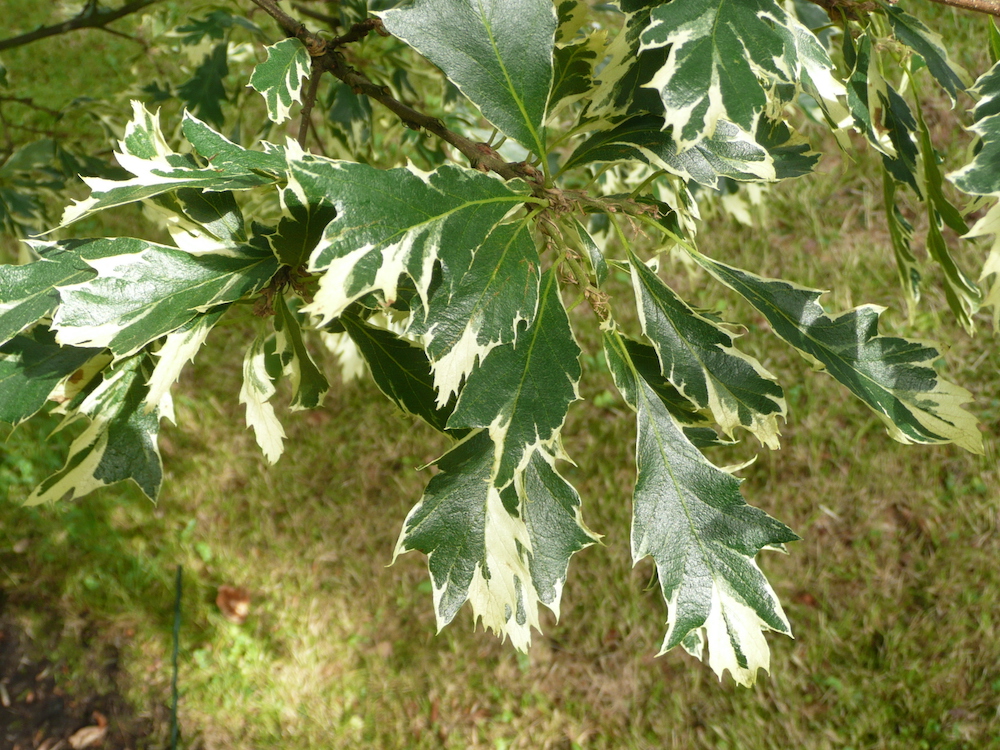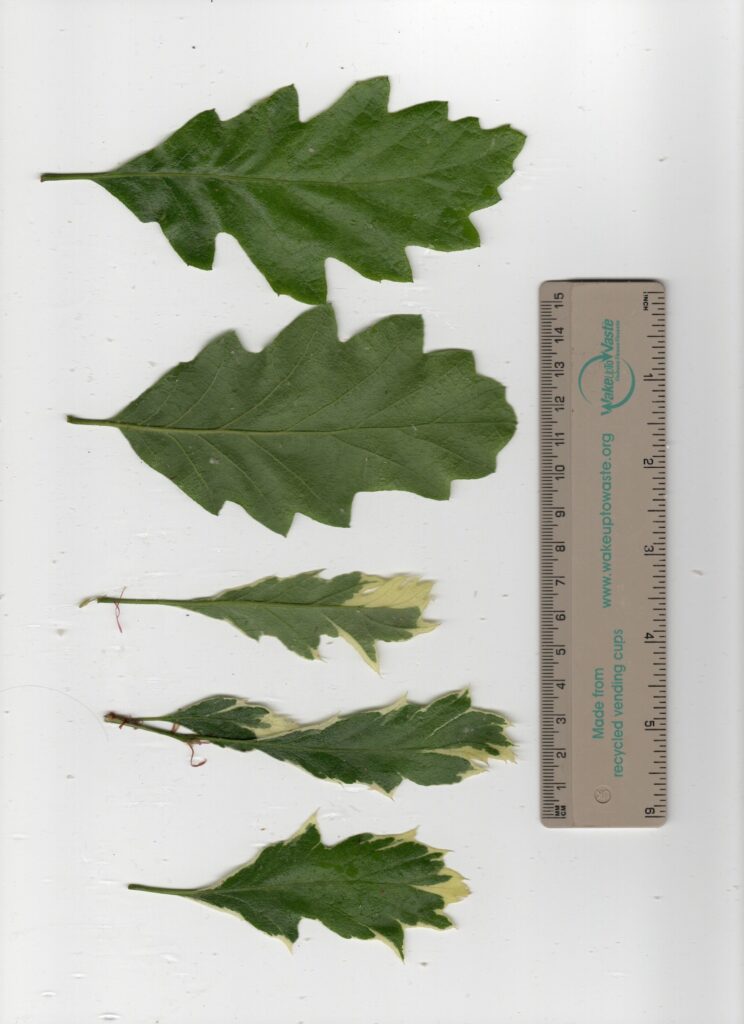Quercus cerris ‘Argentovariegata’ L.
Variegated Turkish oak
This is a probably variegated form of the Turkish oak. In common with other variegated trees the variegated form of Turkish oak is likely to be rather slower growing than the species. Variegation can be caused by a genetic defect or sometimes by virus infection. As virus-caused variegation tends to produce a more blotchy effect, it is likely that the cause in this case in genetic. Variegations are not passed on in seed so trees such as this are propagated by cuttings or by grafting. There are two colours of variegation on our tree, yellowish green and almost white. The tree displays a number of twigs with reversion to non-variegated leaves. The green leaves are much larger than the variegated leaves and less toothed. We originally listed this tree as Quercus robur ‘Argentomarginata’ and are grateful to Allen Coombs of Trees of the World Online for pointing out that it is a form of Q. cerris. However, recent visitors to the arboretum have suggested that the sharply toothed leaves points to this being a variegated red oak, Quercus rubra. This will be resolved when the tree produces acorns as Q. robur Q. rubra and Q. cerris have quite distinct acorn cups.
The young tree in Belfast Botanic Gardens is close to the Ulster Museum steps and grows among a number of mature oaks.





Photos taken in Belfast Botanic Gardens in 2012 and 2023. Copyright: Friends of Belfast Botanic Gardens.
